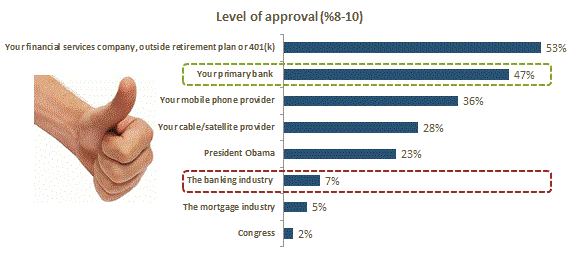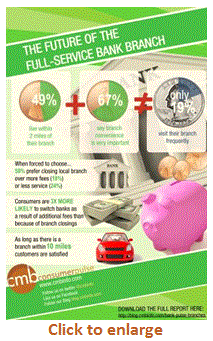 Another Super Bowl weekend is upon us and it’s another year that my team isn’t in it. Worse yet a dear friend (and client) of mine forced me into an early-season wager pitting my poor team against her juggernaut Denver Broncos, to see who would have a better season. Unfortunately, the Pats are out of the Super Bowl, and I am out one lobster dinner.
Another Super Bowl weekend is upon us and it’s another year that my team isn’t in it. Worse yet a dear friend (and client) of mine forced me into an early-season wager pitting my poor team against her juggernaut Denver Broncos, to see who would have a better season. Unfortunately, the Pats are out of the Super Bowl, and I am out one lobster dinner.
Luckily, I’ve got a cunning plan to recoup that loss and I’m happy to share it: your office's Super Bowl Squares. I can hear you already “Jim, Super Bowl Squares have all the strategy of the card game War!" But I’m here to explain how you can get an edge in this classic living-room lottery. So if you are looking to get a leg up on your best friend, 86 year old aunt, or 13 year old nephew you’ve stumbled onto the right blog.
At CMB we pride ourselves on turning data into actionable decisions. So with that backdrop in mind:
You already know that some combinations are preferred over others (specifically combinations containing zeros, threes, and sevens). But do you know how much better one combination is than another? Well, assuming you are in one of the pools that pays out quarterly here’s what you need to know:
There are 28 combinations that have a positive expectation. That is, if you had one of these combinations every year, you’d expect to win more money than you lost (of course that assumes you are playing for money, which obviously none of us are!). Anyway, here are the 28 combinations that you should feel pretty good about:
7-0/0-7
0-0
3-0/0-3
7-7
7-4/4-7
7-3/3-7
4-0/0-4
4-1/1-4
3-3
4-3/3-4
7-1/1-7
6-0/0-6
4-4
6-3/3-6
1-0/0-1
7-6/6-7
But what if you don’t have one of those combinations? Well, this is where the “turning data into actionable decisions” part comes in…There are 5 combinations worth paying a substantial premium for. Yes, that’s right if you aren’t lucky enough to get a good combination you might consider taking action and finding someone who isn’t good at math (or hasn’t read this blog) and buying their combination. Below are the five combinations that each have an expectation of at least 4x. So if you can separate Aunt Millie or little Bobby from one of these squares for anything less than 4 times the per square price, you’ll be doing ok.
7-0/0-7
0-0
3-0/0-3
However, maybe you’ve been lucky enough to land one of these top 5 combinations and you're watching the game with people who overvalue these combinations. I’ve already told you that you should be willing to pay up to 4x for each, but what if you wanted to sell? Since only 0-0 has an expectation greater than 7x, try to get someone to pay in excess of 7 times the buy-in for the others. For 0-0, get at least 9x.
Lastly, maybe you are one of those people who like to zig when others zag. Here are two combinations that have a close to even money expectation (actually around .8), but may seem to others to be far worse. Perhaps you could make someone an offer of 50 cents on the dollar for one of these:
3-1/1-3
4-6/6-4
Whatever you do, stay warm, enjoy the game, don’t eat too much, and NEVER drink and drive. Good luck!
Jim is VP of CMB’s Financial Services practice, he'll be watching the big game on Sunday...and DVRing Downton Abbey.



 Super Bowl weekend is upon us and if you are like most Americans you’ll gather with friends/family to watch the game on Sunday evening whether you have a rooting interest or not. Maybe you’re a football fan, maybe you’re simply a sports fan, or maybe you’re a fan of commercials. Even if you’re not a fan of any of it, there are always Super Bowl squares to keep your interest focused on the game. Ah yes, the classic “gamble” of Super Bowl squares contains all the strategy of the card game War, truly leveling the playing field. But maybe you’re looking increase your odds of winning…some way to get a leg up on your best friend, 86 year old aunt or 13 year old nephew. Well, if you are one of THOSE people you’ve stumbled onto the right blog. At CMB we pride ourselves on turning data into actionable decisions. So with that backdrop in mind...
Super Bowl weekend is upon us and if you are like most Americans you’ll gather with friends/family to watch the game on Sunday evening whether you have a rooting interest or not. Maybe you’re a football fan, maybe you’re simply a sports fan, or maybe you’re a fan of commercials. Even if you’re not a fan of any of it, there are always Super Bowl squares to keep your interest focused on the game. Ah yes, the classic “gamble” of Super Bowl squares contains all the strategy of the card game War, truly leveling the playing field. But maybe you’re looking increase your odds of winning…some way to get a leg up on your best friend, 86 year old aunt or 13 year old nephew. Well, if you are one of THOSE people you’ve stumbled onto the right blog. At CMB we pride ourselves on turning data into actionable decisions. So with that backdrop in mind...
